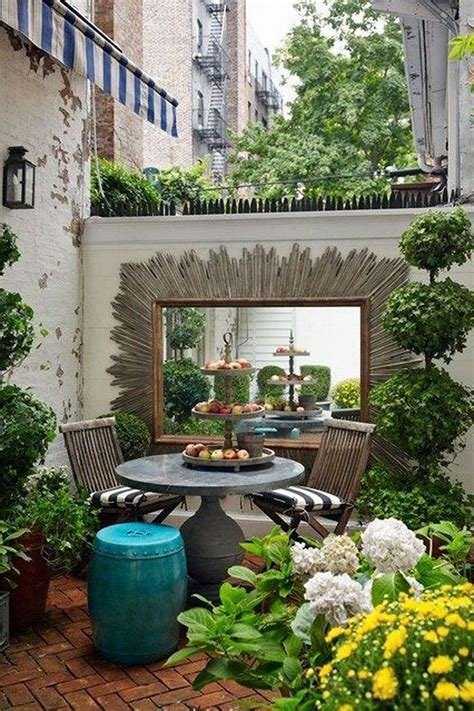How to Design a Cozy Garden in a Small Space
Have you always dreamed of having a cozy garden but feel limited by the size of your outdoor space? With the right design and a bit of creativity, you can transform even the smallest garden into a relaxing and inviting oasis. In this blog post, we will explore various strategies for designing a cozy garden in a small space, from maximizing the layout to integrating seating areas and adding ambiance. We’ll discuss how to choose the right plants, create privacy, utilize vertical space, and incorporate water features to enhance the tranquil atmosphere. Whether you have a tiny urban balcony or a compact backyard, these tips will help you make the most of your outdoor area and design a garden that you can truly enjoy. Let’s dive in and discover how you can create a stunning and comfortable garden retreat, no matter how limited your space may be.
Maximizing Space: Planning the Layout
When it comes to making the most of your outdoor space, planning the layout is crucial. By carefully considering the available space and the specific needs of your outdoor area, you can maximize the functionality and appeal of your garden or patio.
One key aspect of planning the layout is to optimize the use of available space. This can involve cleverly arranging furniture, plants, and other features to make the most of every inch of your outdoor area. Consider using compact and versatile furniture that can serve multiple purposes, and utilize vertical space with hanging plants or wall-mounted shelves.
Another important consideration is to carefully select the plants for your outdoor area. Choose low-maintenance and compact plants that take up minimal space while still providing visual interest. By carefully choosing the right plants, you can create a lush and inviting outdoor environment without overcrowding the space.
By strategically planning the layout of your outdoor space, you can create a functional and inviting area that maximizes every inch of available space. With careful consideration of furniture, plant selection, and overall layout, you can transform even the smallest outdoor area into a beautiful and practical oasis.
Choosing the Right Plants: Compact and Low-Maintenance
When it comes to designing your outdoor space, selecting the right plants is vital to creating a low-maintenance and visually appealing garden. Compact plants are a great choice for smaller spaces, as they don’t require as much room to grow and can be easily maintained. These types of plants are perfect for creating a tidy and organized look in your garden.
Low-maintenance plants are also a key factor in creating a hassle-free outdoor oasis. Drought-resistant and native plants are excellent choices for those looking to minimize watering and upkeep. These plants are well-suited to the local climate and can thrive with minimal intervention, saving you time and effort in the long run.
Furthermore, incorporating evergreen plants can add structure and color to your garden year-round, without the need for constant replanting. This is especially beneficial for those who want a garden that looks great in every season, without the hassle of having to constantly refresh their plant selection.
Finally, consider adding ornamental grasses and succulents to your garden for an added touch of texture and interest. These plants are not only visually appealing but also require little maintenance, making them a perfect addition to a low-maintenance outdoor space.
Creating Privacy: Strategic Use of Screens and Fences
Creating privacy in your outdoor space is essential for enjoying peace and tranquility. One of the best ways to achieve this is through the strategic use of screens and fences. By carefully positioning these elements, you can block out unwanted views and create a secluded retreat right in your own backyard.
When it comes to screens, there are many options to choose from. You can opt for natural materials like bamboo or wood, or go for a more modern look with metal or glass panels. Whichever you choose, make sure they are tall enough and positioned strategically to effectively block out any neighboring eyesores.
Fences are another popular choice for creating privacy in the outdoor space. A solid wooden or metal fence can provide a sturdy barrier from prying eyes, while still adding a touch of style to your yard. Consider adding climbing plants or vines to your fence to soften the look and add an extra layer of privacy.
Integrating screens and fences into your outdoor space can not only enhance privacy, but also add an element of design and style. By carefully choosing the right materials and positioning them strategically, you can create a peaceful oasis where you can truly relax and unwind.
Integrating Seating Areas: Comfortable and Versatile Furniture
When it comes to creating a comfortable and inviting outdoor space, the right furniture can make all the difference. By strategically integrating seating areas into your outdoor design, you can create a versatile and functional space that is perfect for relaxing or entertaining.
Comfortable and versatile furniture is key to making your outdoor seating areas a success. Look for pieces that are weather-resistant and easy to clean, so you don’t have to worry about them getting damaged by the elements. Additionally, consider investing in furniture that can serve multiple purposes, such as a coffee table with built-in storage or a bench that can also be used for extra seating.
When planning the layout of your outdoor seating areas, think about how you want to use the space. Do you envision cozy nooks for intimate conversations, or do you need a large table for outdoor dining? By considering the function of the space, you can choose the right furniture to suit your needs.
Finally, don’t be afraid to get creative with your outdoor furniture. Incorporating elements like hanging chairs, hammocks, or outdoor bean bags can add a fun and unexpected twist to your seating areas, making them even more inviting and comfortable.
Adding Ambiance: Outdoor Lighting and Decor
When it comes to creating a welcoming outdoor space, adding ambiance through outdoor lighting and decor can make a huge difference. The right lighting and decor can transform your outdoor area into a cozy and inviting space for entertaining or simply relaxing after a long day. Outdoor lighting can extend the usability of your outdoor area into the evening, while carefully chosen decor can add personality and style.
One popular way to add ambiance to an outdoor space is through string lights. These can be hung across a patio, deck, or garden to create a warm and cozy atmosphere. Fairy lights, lanterns, and solar-powered lighting are also great options for adding a whimsical and enchanting touch to your outdoor area. Placing lights strategically around seating areas or pathways can enhance the overall ambiance and create a magical atmosphere.
In addition to lighting, outdoor decor such as throw pillows, outdoor rugs, and artwork can add texture and design to your outdoor space. Choosing decor that complements the overall style of your outdoor area can tie everything together and create a cohesive and inviting environment. Incorporating plants and greenery can also add a natural and soothing element to your outdoor space.
Ultimately, the right combination of outdoor lighting and decor can transform your outdoor space into a serene and welcoming sanctuary. By carefully choosing the right elements to enhance the ambiance, you can create an outdoor area that you’ll love spending time in and that will impress your guests.
Utilizing Vertical Space: Vertical Gardens and Hanging Plants
One of the most efficient ways to make use of limited space in a garden or outdoor area is by utilizing vertical space. Vertical gardens and hanging plants not only maximize the use of space, but also add a unique and visually appealing element to the environment. By strategically placing plants on walls, fences, or hanging baskets, you can create a lush and vibrant display without taking up valuable floor space.
When planning a vertical garden, it’s important to consider the types of plants that will thrive in this environment. Opt for compact and low-maintenance plants that are well-suited for vertical growth. Succulents, ferns, and trailing vines are great choices for vertical gardens, as they are able to adapt to the limited space and continue to flourish.
Another key element in utilizing vertical space is the use of hanging plants. Hanging baskets and pots can be hung from pergolas, railings, or overhead structures to create a cascading effect, adding depth and dimension to the area. Incorporating a variety of comfortable and versatile furniture in the space below the hanging plants can also create a cozy and inviting atmosphere.
Lastly, don’t forget to incorporate outdoor lighting and decor to further enhance the ambiance of the vertical garden. String lights, lanterns, and decorative pieces can add a touch of elegance and charm, making the space even more inviting, especially in the evenings. By utilizing vertical space and incorporating hanging plants, you can transform a small or narrow outdoor area into a lush and thriving garden oasis.
Incorporating Water Features: Creating a Tranquil Atmosphere
When it comes to creating a tranquil atmosphere in your outdoor space, incorporating water features can be a game changer. The soothing sound of running water can instantly make your garden feel more serene and inviting.
One way to incorporate water features is by adding a fountain or waterfall to your garden. Whether it’s a small tabletop fountain or a larger waterfall feature, the gentle sound of flowing water can create a sense of calm and relaxation.
Another option is to include a pond or water garden in your outdoor space. These features not only add visual interest to your garden, but also provide a habitat for fish and other aquatic wildlife.
In addition to the sound of running water, consider adding lighting to your water features to create a magical ambience in the evening. Submersible LED lights can be placed in the water to illuminate fountains, ponds, and waterfalls, adding a touch of enchantment to your outdoor space.
Frequently Asked Questions
How can I maximize space when planning the layout of a cozy garden in a small space?
To maximize space in a small garden, consider using vertical space with shelves, hanging plants, and vertical gardens. You can also create different levels with raised beds or planters to make the most of the available space.
What are some compact and low-maintenance plants suitable for a cozy garden in a small space?
For a small garden, consider using compact and low-maintenance plants such as dwarf shrubs, small ornamental grasses, and perennials that don’t require frequent pruning or maintenance. Succulents and herbs are also great options for a small garden.
How can I create privacy in a small garden using screens and fences?
To create privacy in a small garden, consider using screens, trellises, or fences with climbing plants to block out the view from neighboring properties. You can also use tall plants and hedges to create a natural privacy barrier.
What are some comfortable and versatile furniture options for a seating area in a cozy garden?
For a seating area in a small garden, consider using foldable or stackable furniture that can be easily stored when not in use. Choose comfortable and versatile pieces such as outdoor bean bags, small bistro sets, or modular seating that can be rearranged to fit the space.
How can I add ambiance to a small garden using outdoor lighting and decor?
To add ambiance to a small garden, consider using outdoor lighting such as string lights, lanterns, or solar-powered LED lights. Decorate the space with weather-resistant rugs, cushions, and outdoor artwork to create a cozy and inviting atmosphere.
What are some ideas for utilizing vertical space in a small garden with vertical gardens and hanging plants?
To utilize vertical space in a small garden, consider installing vertical gardens on walls or fences. Use hanging plants in baskets or wall-mounted planters to add greenery without taking up valuable floor space.
How can I incorporate water features to create a tranquil atmosphere in a small garden?
To incorporate water features in a small garden, consider adding a small fountain, pond, or water feature that fits the scale of the space. Choose a location that is visible from seating areas to create a calming and tranquil atmosphere.






